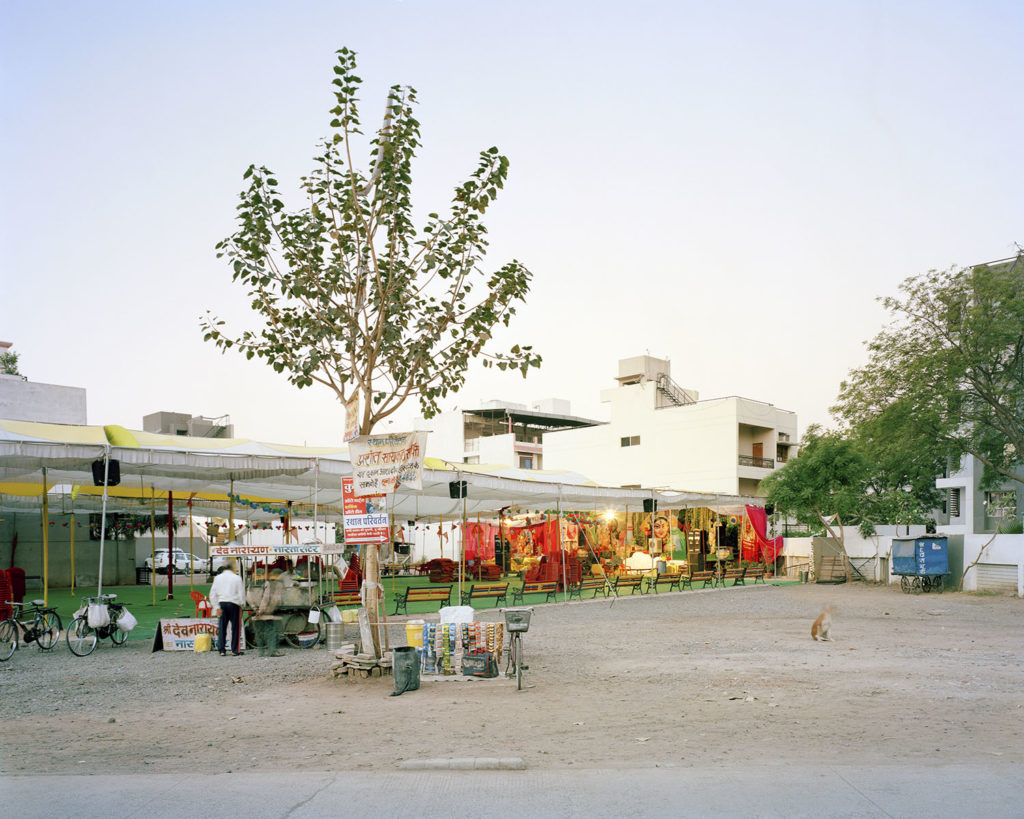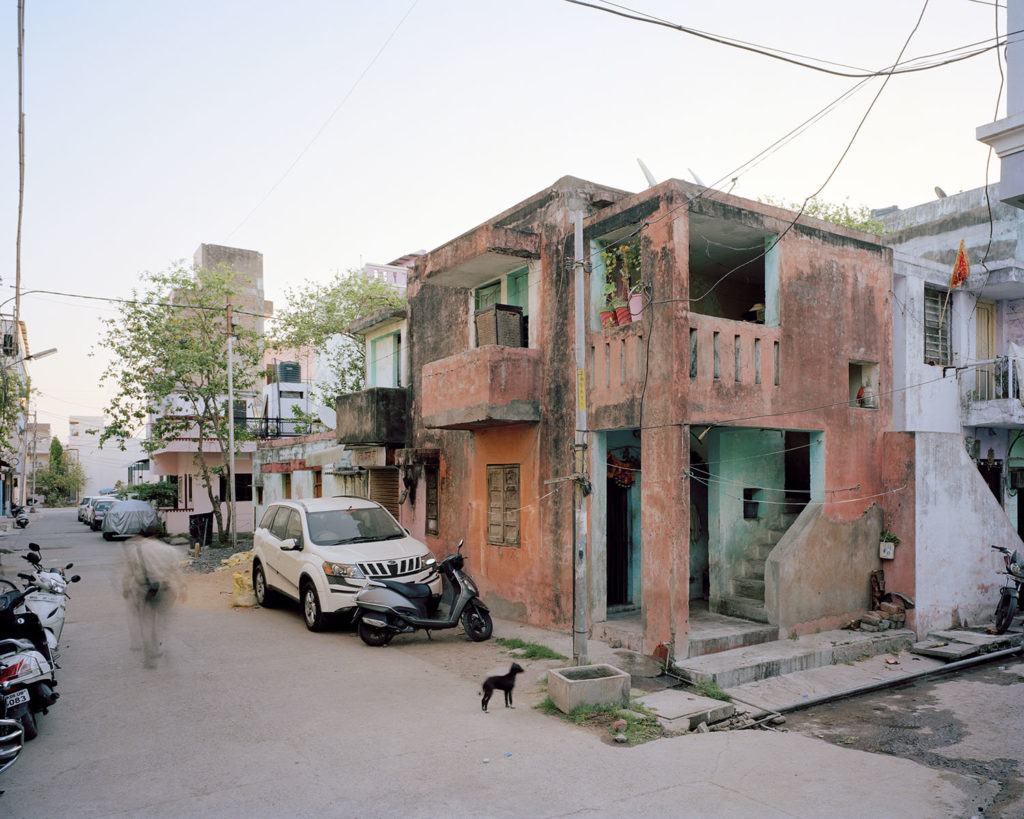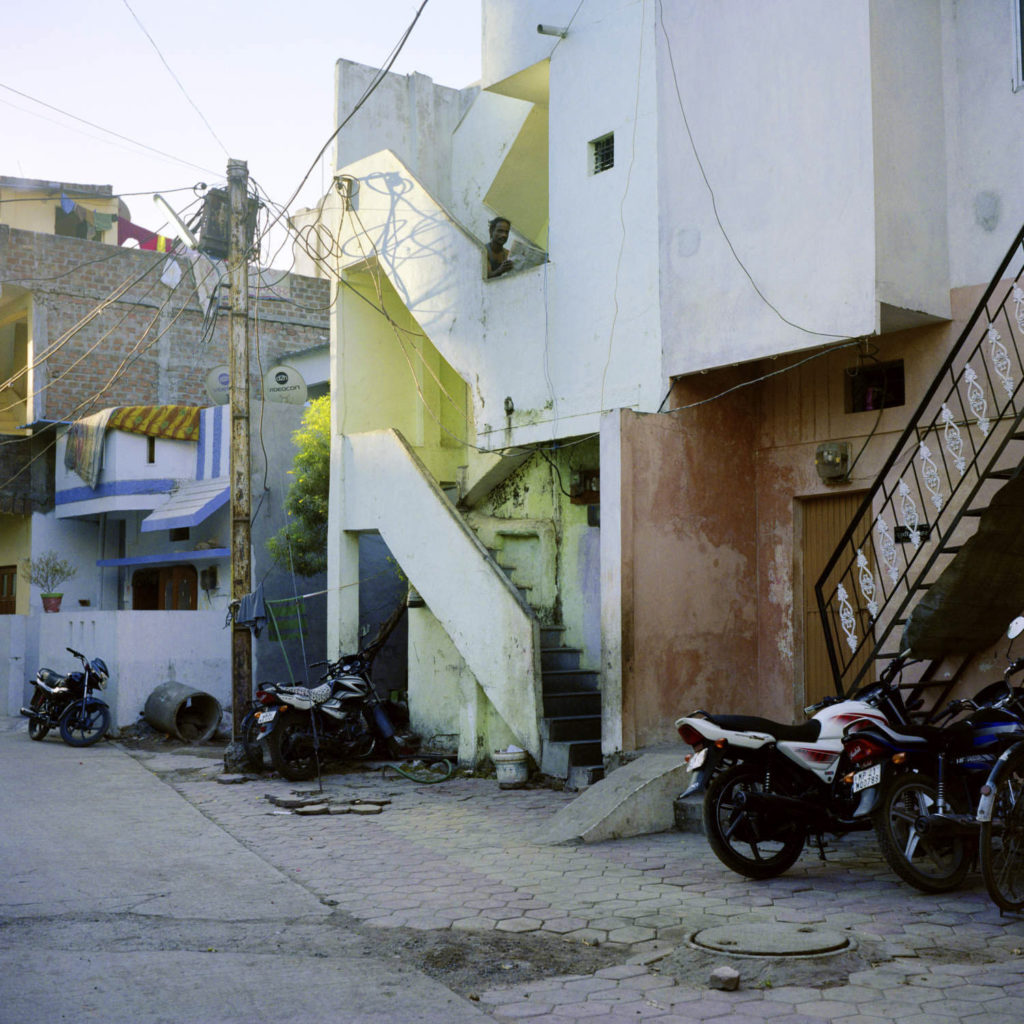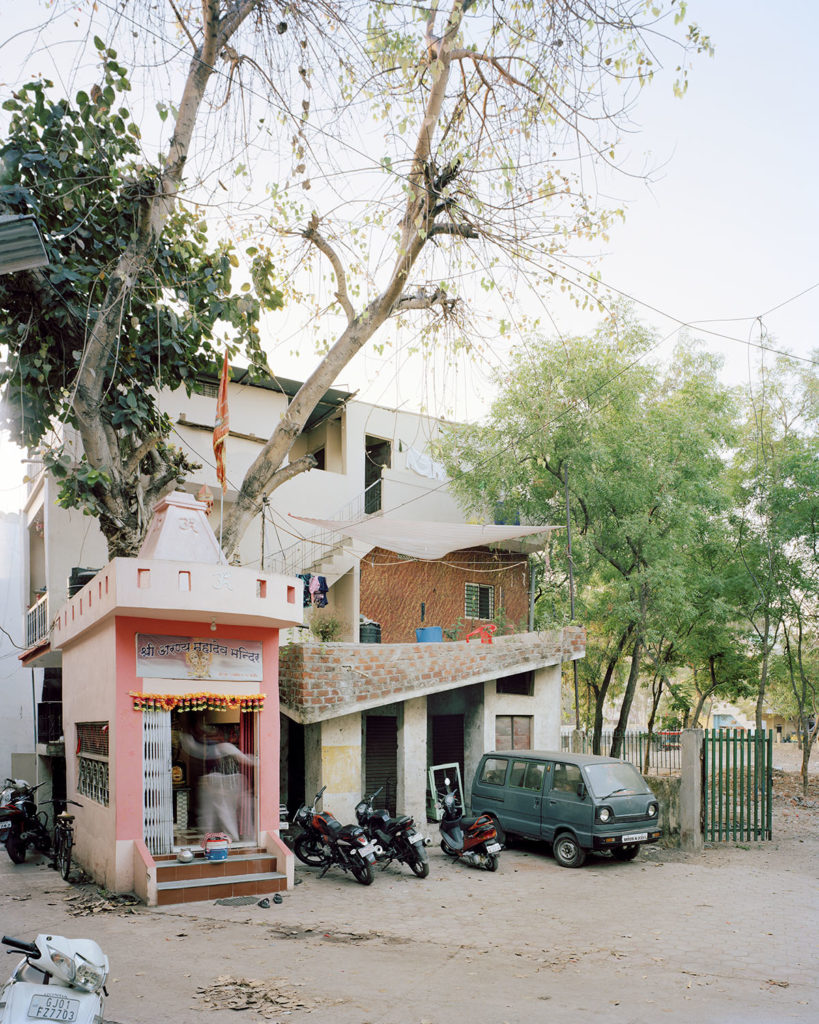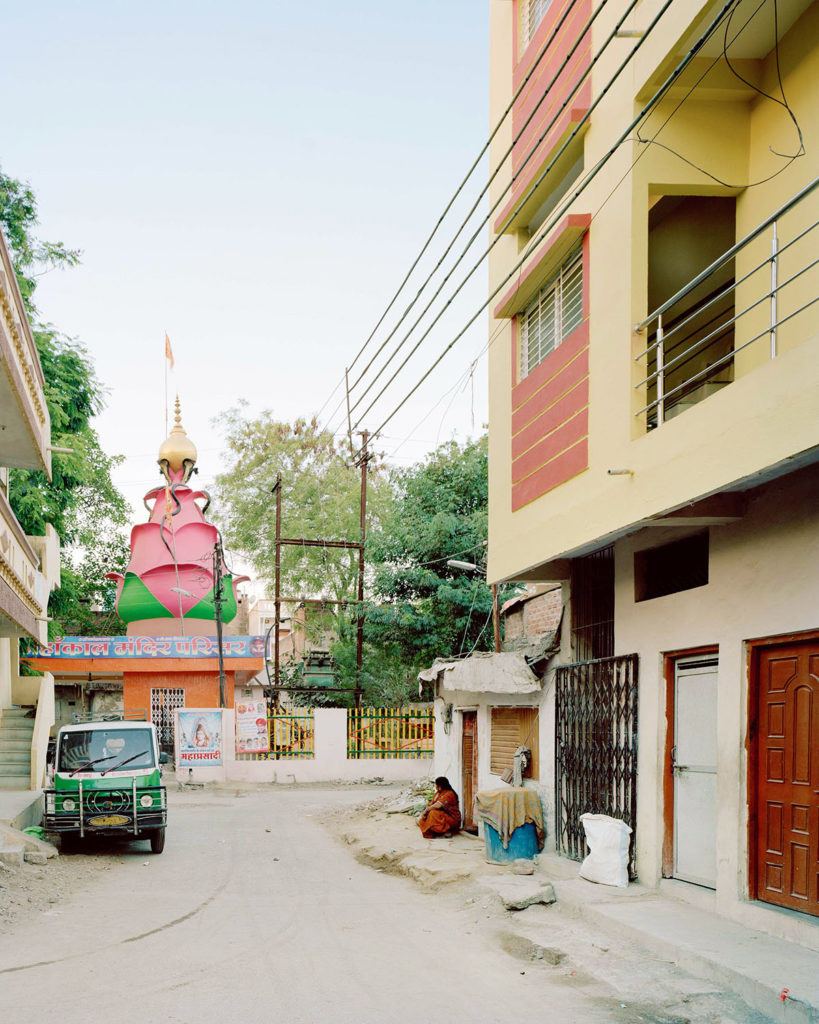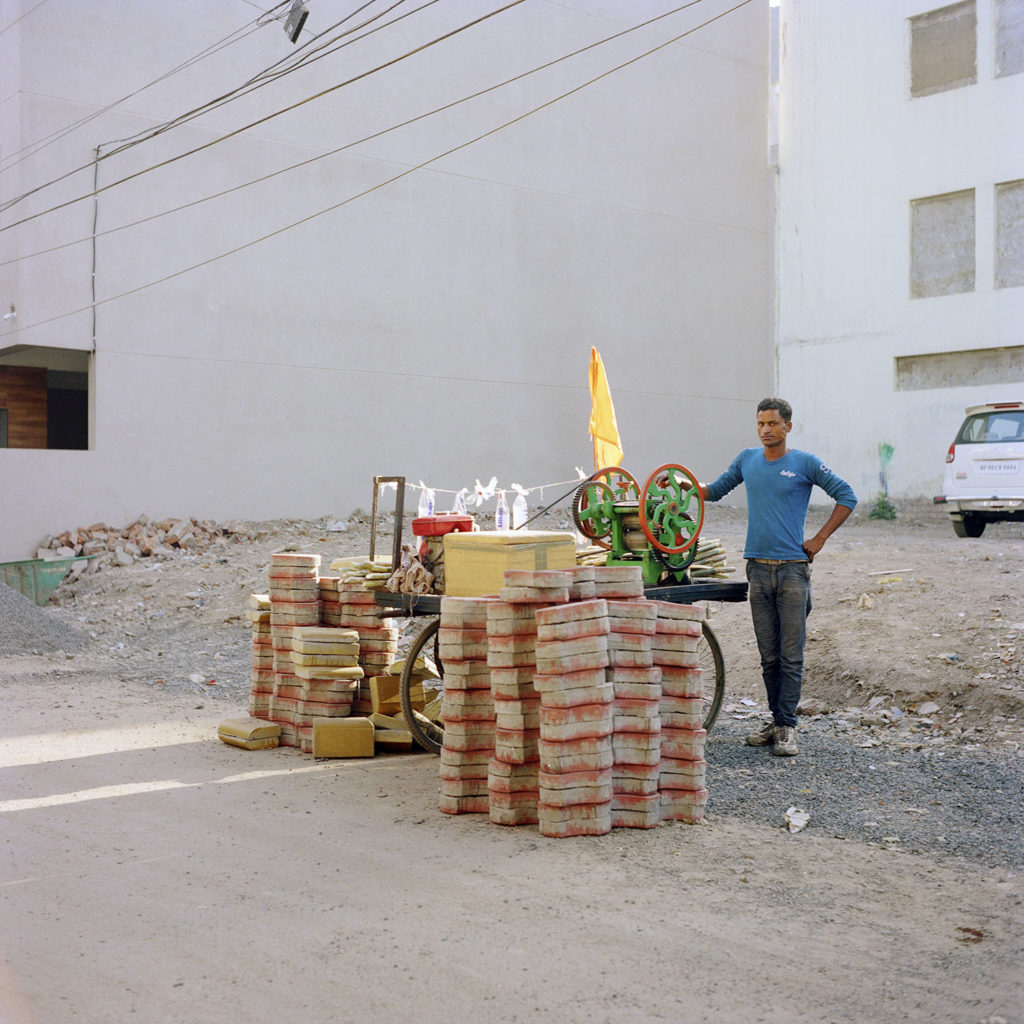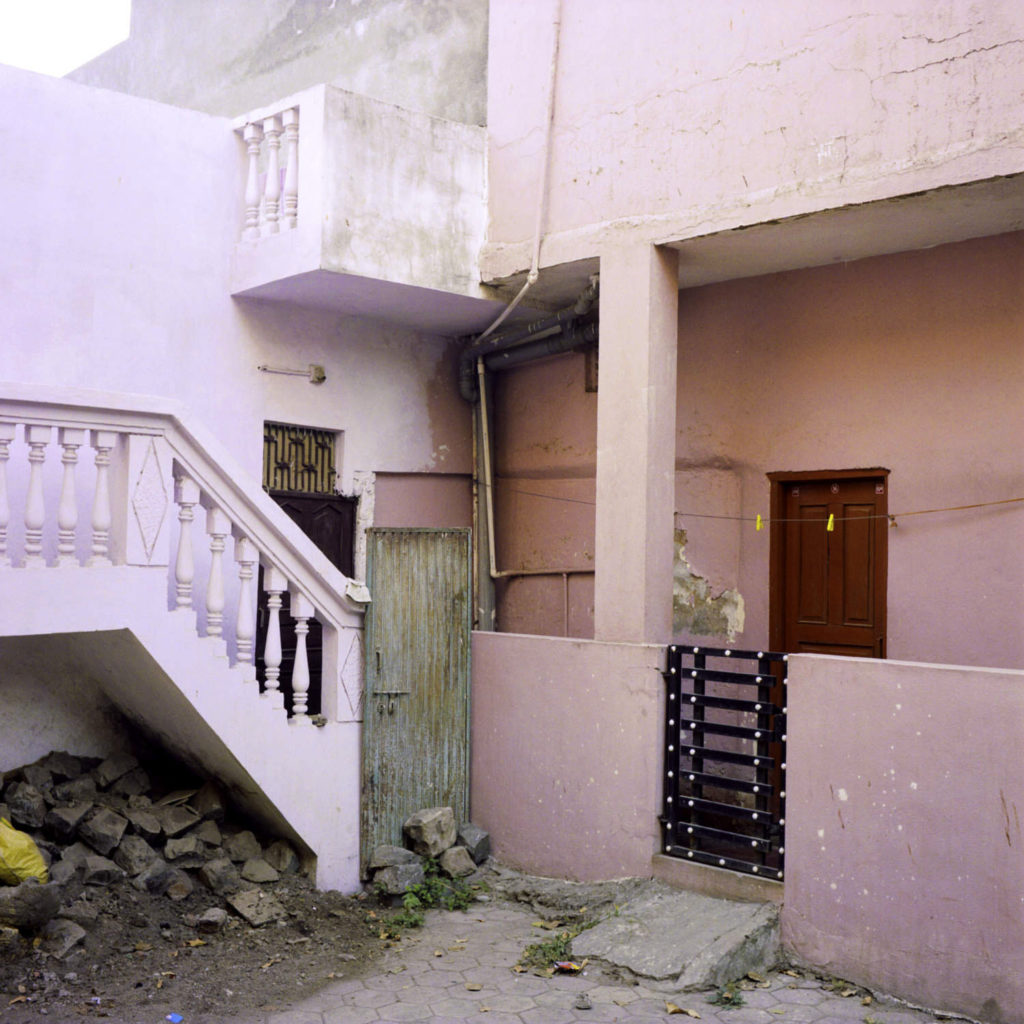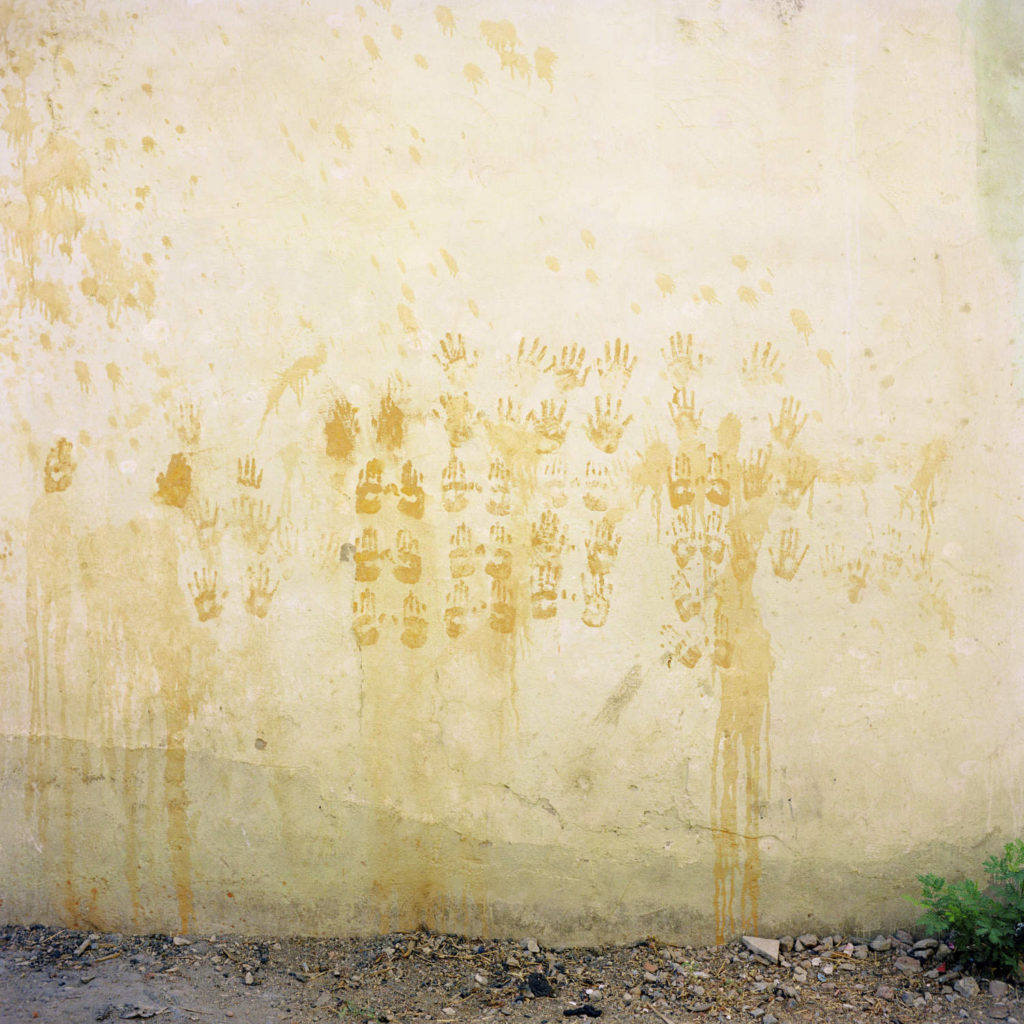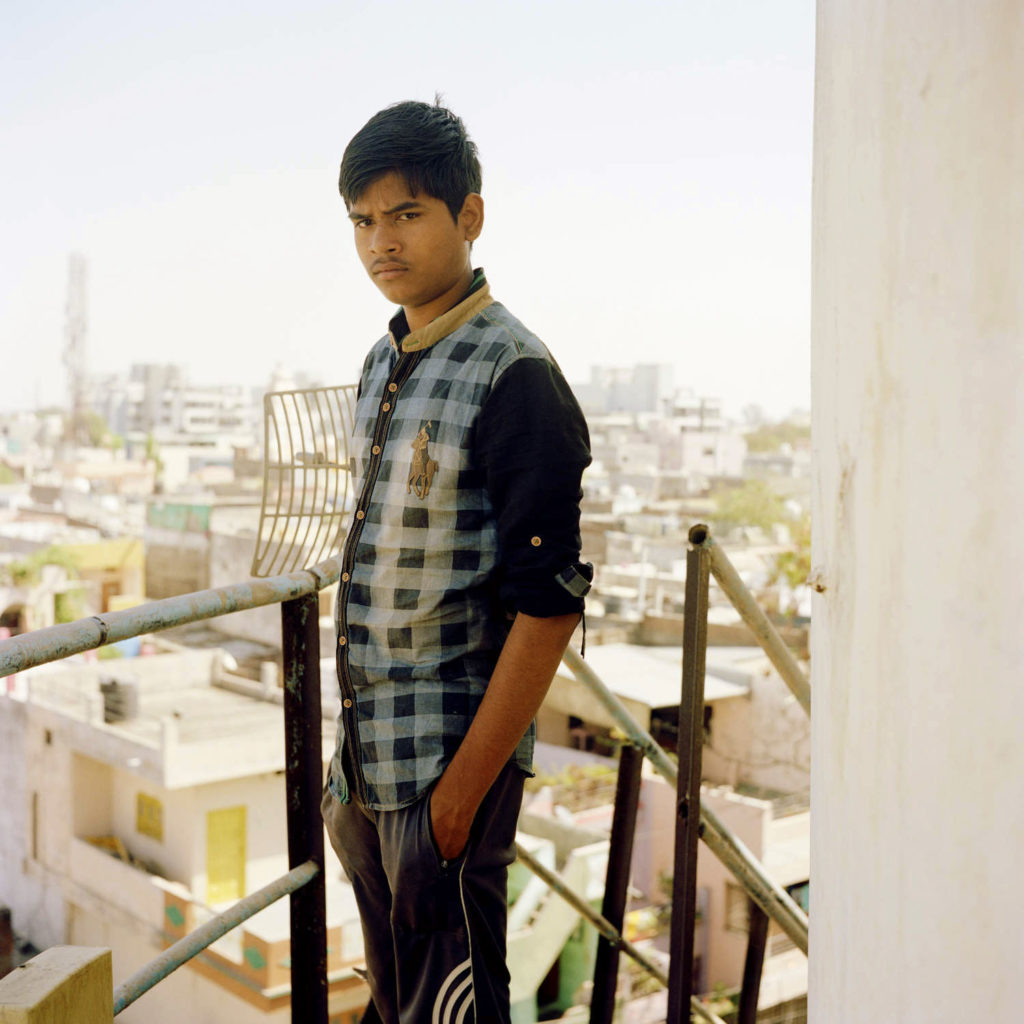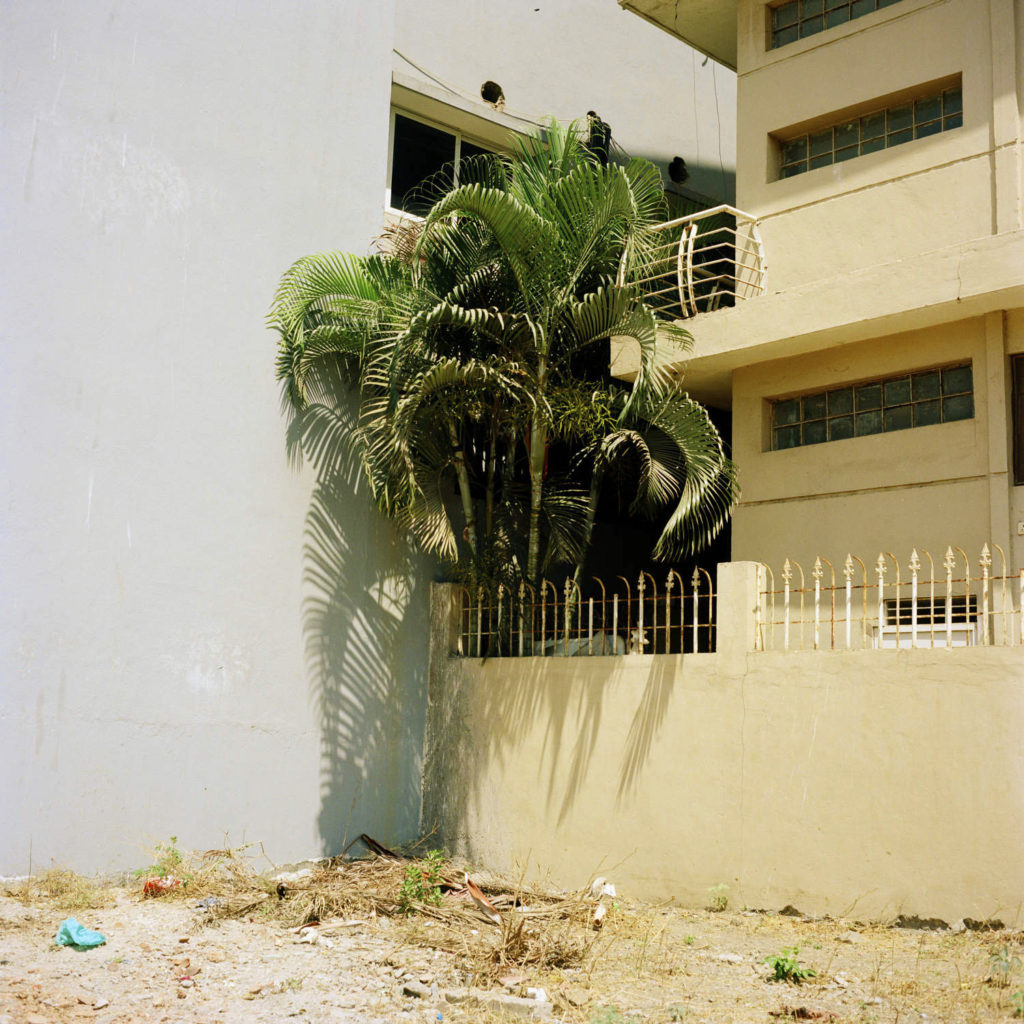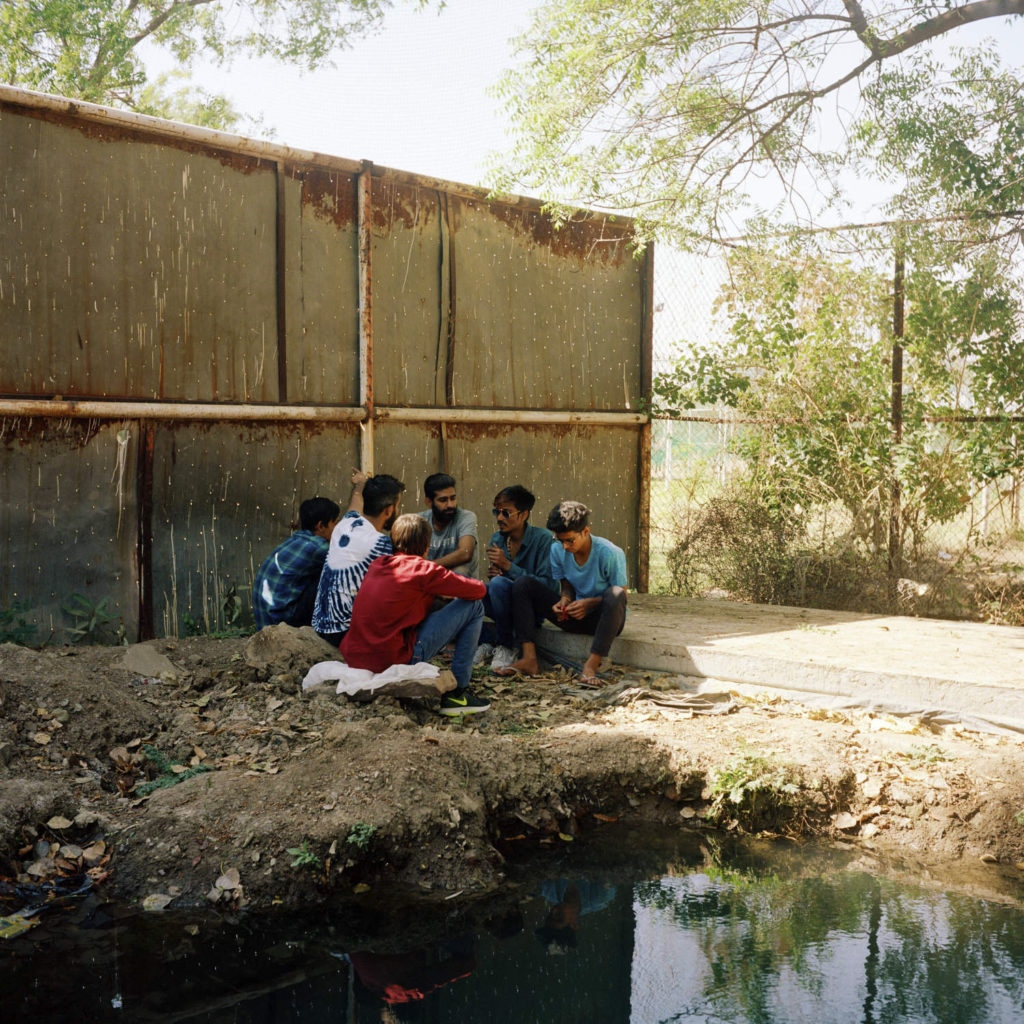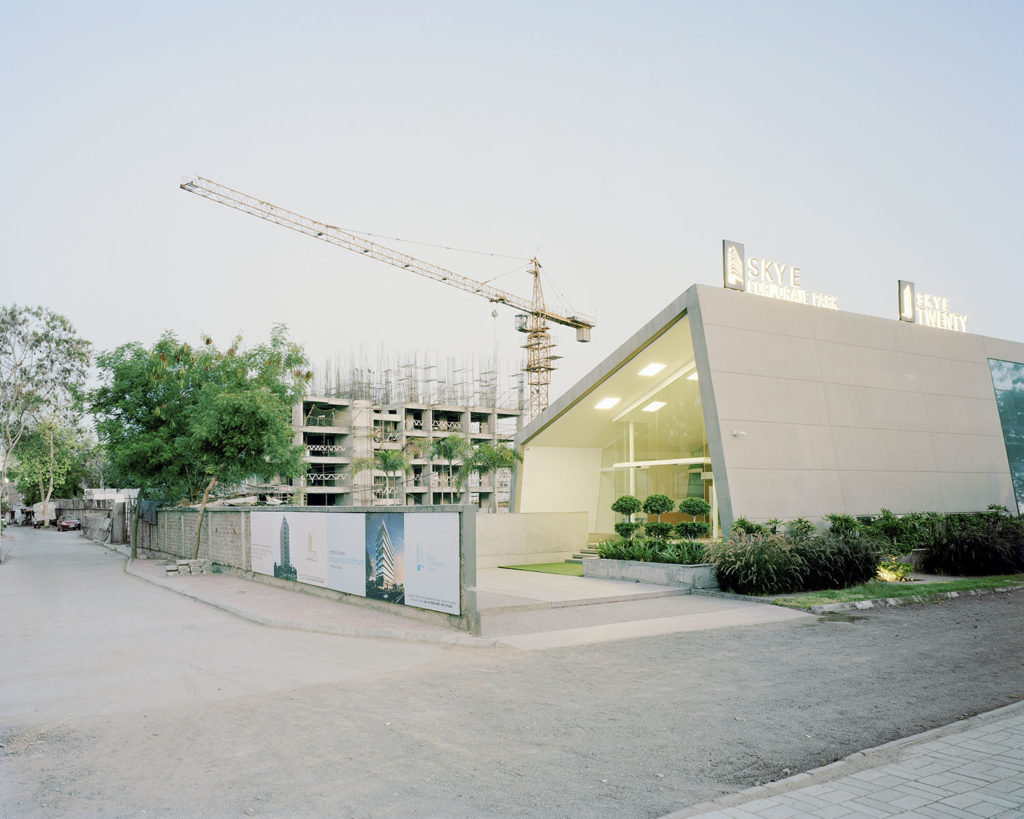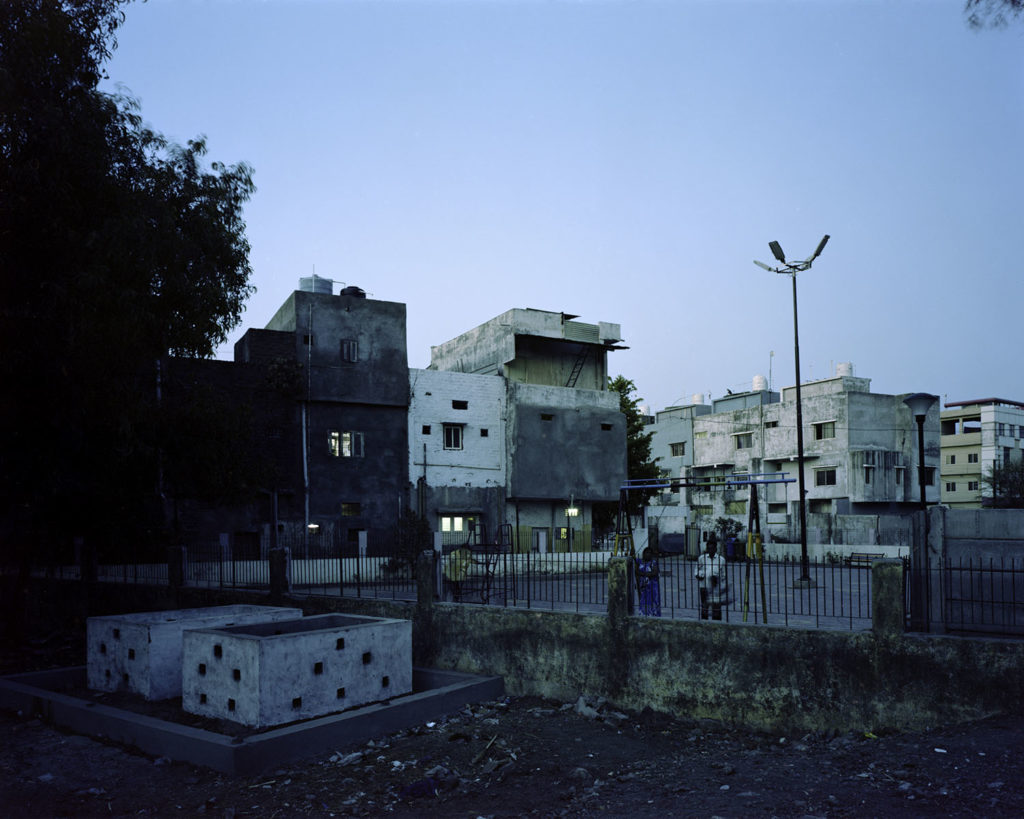With a 2-million population, the Central Indian city of Indore resembles many a middle-sized Indian city, where economic development quickly transforms the urban fabric.
Located North of Indore, Aranya is an atypical neighborhood caught in the middle of urbanization. Designed by the Indian architect Balkrishna Doshi in the 1980s, the project of Aranya was an experiment in social housing where low-income families built their houses on their own on allotted parcels, following Doshi’s intricate Master Plan. Almost thirty years on, I visited Indore in March 2018 to document the legacy of the Plan and its appropriation by the inhabitants. While scouting locations to shoot urban views of Aranya, I found myself drawn to odd scenes that seemingly told a different story than the one I had come for.
In a neighborhood with surprisingly good common spaces and quality of life, there remained a roughness in between the walls erected both around and within Aranya. As the many layers of reality progressively unraveled before my eyes, I found that Aranya, far from being preserved from the market-driven logic of urbanization, presented shades of the sense of vulnerability that is so common across Indian cities.
In a constant flux due to construction and upgrading works, with nearby high-end projects threatening its low rents and slow life, the neighborhood faces the rise of security as a concern at its edges. In stark contrast with the utopian ideals of Aranya, CCTV cameras, high walls, fences and tired security guards bear witness to the growing anguish born out of rapid development around the area.
This body of work bears testimony to the duality of Aranya’s condition today: a mixed-income neighbourhood with a variety of spaces and architecture, a unique case of urban planning in India, and an area under external pressure.


